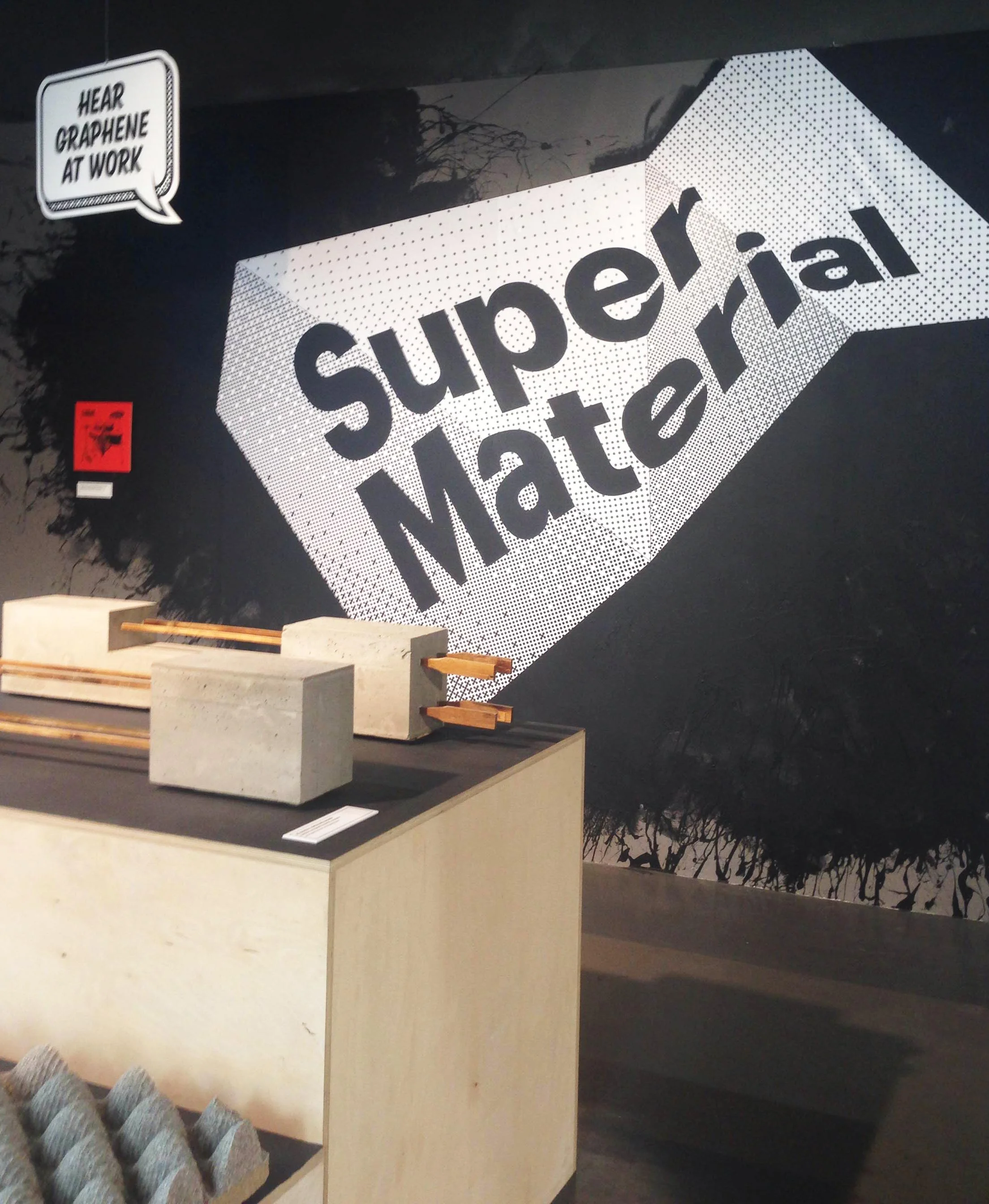Materials matter at the SuperMaterial Exhibition
Editorial team member Daphne Stylianou visits SuperMaterial–a major public exhibition by The Built Environment Trust, at the Building Center in London. On show till April 27, 2017, the exhibition showcases exceptional material innovations such as bio-receptive concrete, facade panels made of pollution, and Nanocellulose. Here Daphne captures the essence of this exhibition, and what you should look out for!
“The next industrial revolution is upon us. The way we envisage, create and build our cities and landscapes has not faced such rapid change in decades. And materials are shaping the movement.”
SuperMaterial exhibition by The Built Environment Trust.
The SuperMaterial exhibition presents innovative ideas for designing and building, with a spotlight on materials. Components of our lived environments and experiences, materials are the indispensable, overlooked, contested or desired elements that could transform our cities as ‘super materials’ of the future. From bio-design to using pollution as a resource, material innovations are addressing the possibilities of new processes and opportunities to respond to complex problems and create healthy cities.
SuperMaterial celebrates material research for alternative applications, sustainable practice, and building solutions. These could be the materials shaping tomorrow’s urban scapes and our lives. Such ideas may be disruptive or radical in current practice, but the exhibit suggests new paradigms of understanding and reevaluating a material consciousness for future-making.
Certain participating projects in the exhibition aimed to rethink concrete, a ubiquitous material in cities, for a healthier transformation of buildings. BiotA Lab, for one, is looking toward sustainable adaptations through bio-receptive concrete, which is embedded with microorganisms carrying out photosynthesis while absorbing air pollutants.
Bio-receptive Concrete from BiotA Lab
Clearly, a recent trend in design has embraced biotechnology and living systems, to incorporate living matter and biological processes in architecture and design. We could soon be inhabiting living buildings, surrounded by responsive materials and objects. Looking into what we can borrow and learn from nature, there is a shift from making to ‘growing’ materials instead. Some examples include algae, coconut, and more profoundly cellulose. Abundant and biodegradable, cellulose as a natural resource bears significant potential for future practice. Aalto University displays Nanocellulose and wood dust composites at SuperMaterial, while ecoLogicStudio with Urban Morphogenesis Lab presents microbial cellulose in different manipulated states, including a textile-like form.
ecoLogicStudio with Urban Morphogenesis Lab present microbial cellulose in different manipulated states, including a textile-like form seen above.
A series of events will continue to accompany the SuperMaterial exhibition, and feature different designers and products, discussing materials and their applications, both current and future. On the night of Feb 3rd, when I visited the exhibition, we were treated to a violin recital with a golden orb-weaver spider silk violin designed by engineer Luca Alessandrini who interrogates the acoustic properties of silk. Another unlikely design material with an unlikely application–spider silk is highly elastic and five times stronger than steel.
Luca Alessandrini discusses his work at at "Golden orb-weaver spider silk violin recital"
This exhibition raises many important questions about how materials might change our world, offering multiple explorations and interpretations. It is an invitation to think about what future cities might look like, how they would be structured and what behaviors they would afford.
Learn more about the SuperMaterial exhibition here.
About the Author: Daphne Stylianou is a London-based researcher interested in material culture, whose background in anthropology references cultural, social and creative processes in design. Her research into making and open design interrogates the blurred boundaries between designer and user, and the engagement of process, practice, and materiality. Working within trans-disciplinary design, she investigates co-design methods for social innovation and sustainability.










